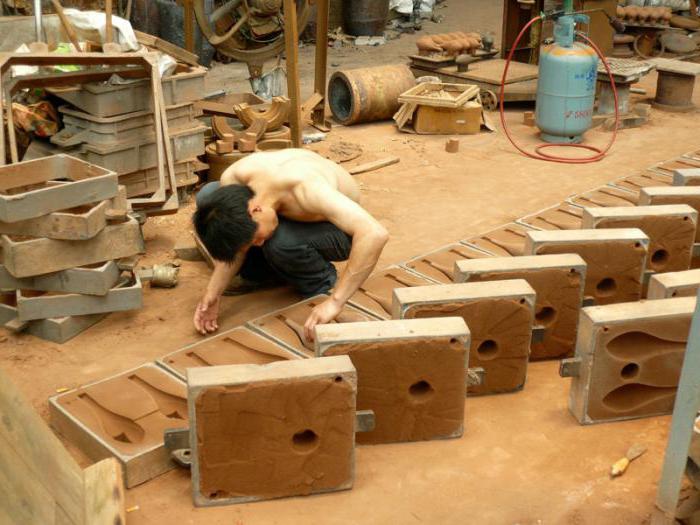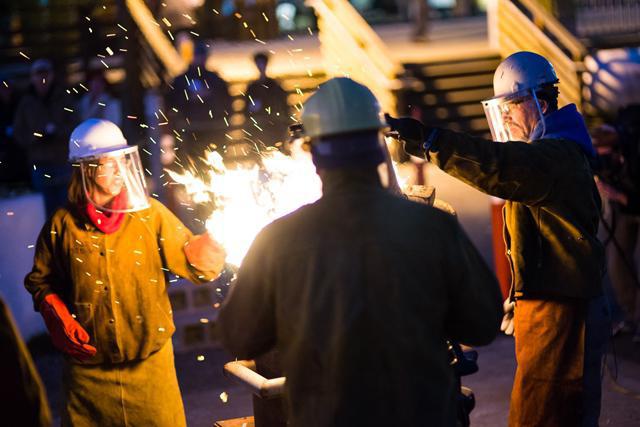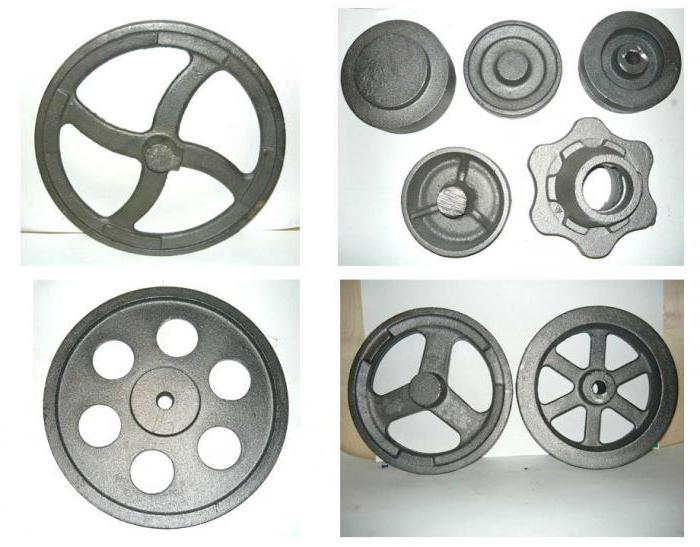Sand-clay molding: advantages
Processes of foundry manufacturing of metalblanks are organized in different ways. As the resulting product, much depends on the characteristics of the base, on the basis of which the object is modeled, that is, from the shape that takes the fill of the future procurement material. One of the most popular technologies is casting into a sandy-clay form, which gives many advantages. The method is quite old, but it is actively used in the production of different levels - from small workshops to large enterprises.

General information about the technology
The injection process is a technicalprocedure, as a result of which a preform or an already finished product with the necessary geometric parameters is formed from the molten metal. To achieve the required shape, a model is used that meets the requirements. Bearing the same basis for casting in this case is a sandy-argillaceous form. It is formed by two groups of components. The first includes zirconium and quartz sand, and the second - kaolin and bentonite clay. Thus, a combination of a single tooling is formed, which in the process of work takes the material of the future workpiece. But even these are not all components on the basis of which casting is realized in sandy-clayey forms. Technology does not do without a model kit, which is a kind of example of future procurement. For such modeling, soft or pliable materials are used, such as wood or light metals. However, the soft foundation is used only in cases when it is necessary to duplicate the target part. But it happens that masters are dealing with already finished products, the parameters of which need to be repeated through casting. Now we should go directly to the advantages of this technology.
Variety of forms

The complexity of using most forms andmodels for casting is that the technology does not provide for the destruction of their structure. This significantly limits the procedure for performing the operation, complicating the functions of workers. In the case of sandy-argillaceous forms, such limitations do not exist, since the method initially assumes a one-time use of the form. However, this does not mean that the reusable use of rigging is fundamentally excluded. For reasons of economy, the form can be applied serially, if this does not contradict the requirements to the final result of the process. Technological and organizational advantages of casting in sandy-argillaceous forms are largely determined by the approach to the practical part of implementation. In the case of a permanent snap-in, you can count on removing the mold without damaging it, and also for casting with the necessary parameters. This option is often used in the work with simple castings. But if it is a question of complex workpieces, then a detachable collapsible form is used, for which there are no restrictions in terms of the parameters of the required product.
Technological accessibility of the organization of the process

Example of using sand molds for castingdemonstrates, how much more profitable can be traditional production techniques in comparison with modern ones. In this case, this is due to the simplicity of the casting organization. The operation requires only a set of the above-mentioned materials for the form and a modeling rig, which also does not require the implementation of complex procedures. Elementary models for molding can be made from wood by an improvised carpentry tool. Unless in responsible industries in the manufacture of castings of complex shapes, additional means of processing and impregnating this material are involved. Also difficult is casting in a sandy-clay form, made of metal and plastic. But, again, this applies to specialized industries. Practice shows that in the world about 80-90% of all castings are made on the basis of the simplest capacities in the form of improvised tools and traditional drying chambers.
Economic expediency

Usually, the use of one-off equipment requirescost of the technological process. Therefore, such solutions are addressed only in extreme cases, if you want to manufacture parts or designs of non-standard forms. But the reverse trend shows the foundry. Casting in sandy-argillaceous forms justifies itself financially even in those cases when a destructible base is used. This can be explained by minimal costs for both the form itself and the modeling design.
Universality of technology
There are few production aspects,which could limit the scope of this technology. It is used in industry, construction, small-lot and piece production of fittings, in private workshops, etc. Unless specialized high-precision production lines do not allow this process, since it does not allow to ensure the proper level of accuracy of the characteristics of the billet. But from the point of view of the application of metallic melts, universality is noted, which, apart from other technologies, casts into sandy-argillaceous forms. Briefly reflect the unacceptable metals can be a group of refractory alloyed species. Traditional casting metals are quite suitable for use in this molding operation.

Possible defects in casting
The weak point of this technology, as statedabove, is low accuracy in the parameters of the workpiece. Products are obtained rough, not always symmetrical and with the presence of individual defects. This nuance is the reverse side of roughness and ease of getting a snap. In addition, casting in the sandy-clay form allows the risks of falling into the casting of non-metallic inclusions. Depending on the metal itself, gas porosity can also occur. But this does not mean that defects become a serious obstacle to the widespread use of sand technology. Compensate for this defect can be compliance with the rules of quality casting.
Recommendations for obtaining high-quality workpiece
Technologists are advised to adhere to two mainrules that will allow you to get closer to getting the expected result. First, it is necessary to avoid using the method in conditions of low fluidity of the metal. The fact is that the high cooling rate can promote intense cooling and melt, which causes the formation of junctions and underfills. The second nuance, without regard to which professional casting is not costly in a single sandy-argillaceous form, concerns the holding of a small tolerance for the volume of billet. Increasing the initial parameters in the future will allow to mechanically modify the product without the risk of irreparable damage.
Conclusion

The technology is simple and affordable, butthis does not mean that it does not involve development. In some directions, sand-clay molding is also modernized, which makes it possible to optimize the process and eliminate some of its shortcomings. The most noticeable and promising branch of the method is considered to be the evacuated form. The principles of using sand remain the same, but the clay group of components as a binding base in this case is excluded.








